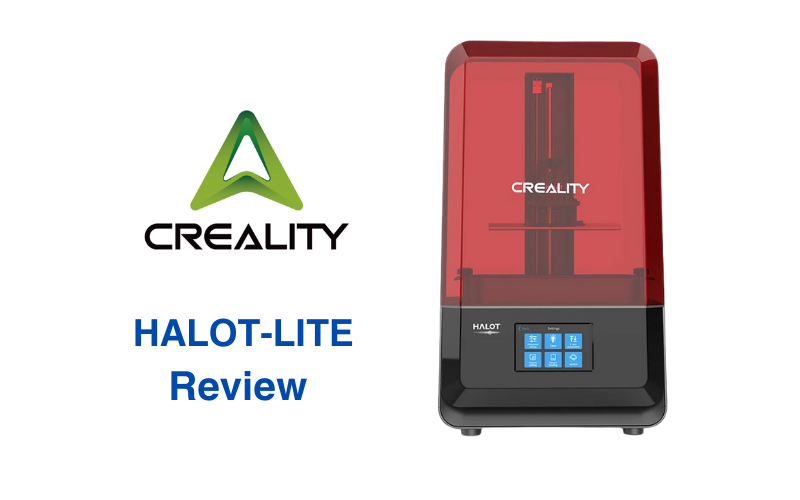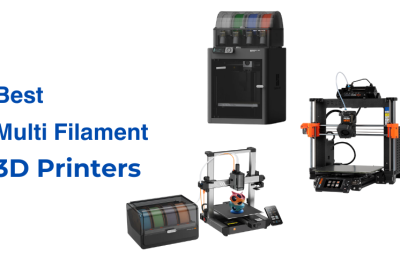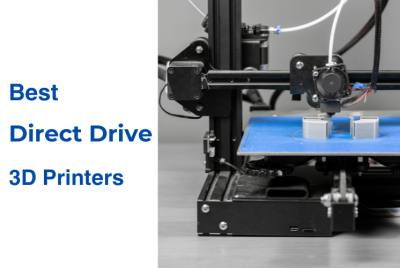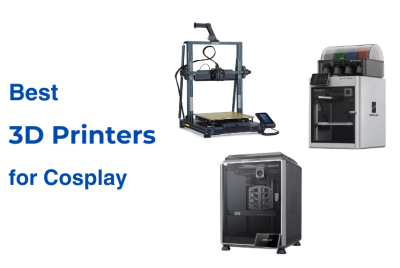Creality Halot Lite Review
Creality is well-known in the 3D printing industry by developing a comprehensive lineup of resin 3D printers that consistently deliver high-quality results. Their range includes models such as the HALOT-ONE PLUS, HALOT-ONE PRO, HALOT-SKY, HALOT-ONE, HALOT-MAX, and HALOT-LITE. Each is designed to meet the expectations of professionals in fields like product design, dentistry, and engineering. These printers are known for producing detailed outputs, making them suitable for projects where accuracy is essential.
Creality extends its innovation beyond hardware. They’ve developed resins for different professional tasks. It includes standard applications, dental molds, and casting prototypes. Each resin is engineered for users to have reliable materials for various challenges. They also created their accessory lineup to improve resin 3D printing process, such as the curing and washing stations that streamline post-printing procedures.
Their software tools are designed to be user-friendly, removing much of the guesswork from 3D printing. They are useful for preparing designs and managing the printing process, which make it easier for professionals to focus on creating exceptional results without unnecessary hassle. In this review, we’ll explore how the Creality HALOT-LITE fits into this impressive lineup and how it enables users to achieve outstanding results across various industries.
Design and Build Quality
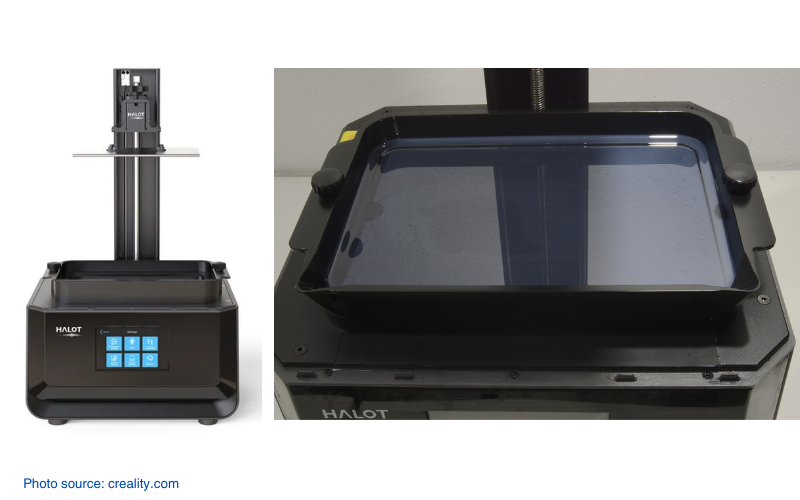
The Creality Halot-Lite feels solid and ready for action. Its frame supports steady printing, while the 8.9-inch monochrome LCD screen provides enough space for mid-sized projects. This printer is built for those who want dependable performance without fuss.
The 5.0-inch touchscreen at the front is easy to use and helps you manage everything from settings to print monitoring. Inside, the build plate stays secure during use, and the resin vat fits neatly into place, making refills and maintenance simple. Stability takes center stage with a Z-axis setup that holds steady, even during longer or more detailed prints. At the back, the activated carbon filter helps reduce resin fumes, making this printer a more comfortable choice for indoor workspaces. This straightforward design is practical and focused on delivering a good printing experience.
Key Features and Specifications
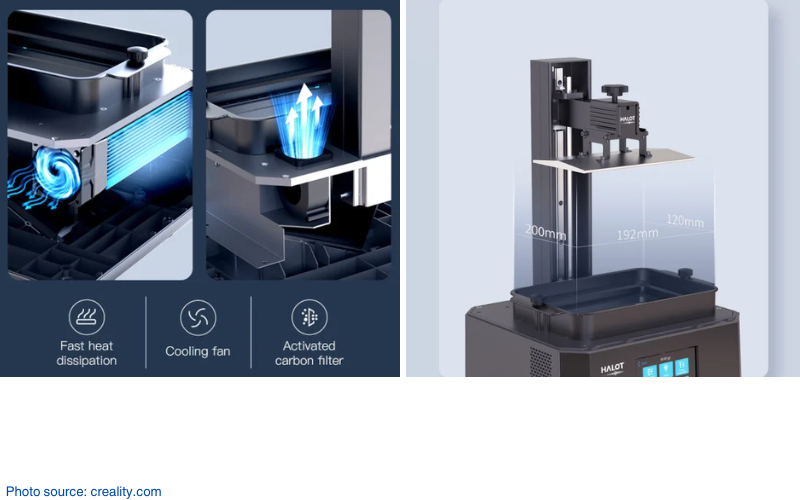
| Key Features | Specifications |
|---|---|
| 9.25” 6K Monochrome LCD Screen | Print Volume: 192 x 120 x 200 mm³ |
| Self-Developed Integral Light Source | XY Resolution: 50 µm (3840 x 2400 pixels) |
| Z-axis with Dual Linear Rails and Ball Screw System | Layer Thickness: 0.01-0.20 mm |
| Cortex-A53 Quad-Core Processor with AI Algorithms | Light Source: Self-developed Integral Light Source |
| Wi-Fi Connectivity for Remote Printing and Firmware Updates | Slicer Software: Compatible with standard slicing tools |
| Flip Cover with Translucent Material | Connectivity: USB | Wi-Fi |
| Storage: Built-in Memory | |
| System: ARM Cortex A53 Chip | |
| Operation: 5″ HD Color Touchscreen |
The Halot-Lite balances a reasonable build volume with the kind of resolution you’d expect for detailed prints. The 192 x 120 x 200 mm space is big enough for mid-sized projects. And the 50-micron resolution delivers clear results without overcomplicating things. Creality’s integral light source uses 12 lamp beads to spread light evenly, so you’re less likely to deal with uneven surfaces or failed prints.
The monochrome LCD screen works quickly, curing layers in as little as one second. And it should last longer than older screens. The 5-inch touchscreen on the front makes it easy to navigate menus and adjust settings without much hassle. Wi-Fi is a handy feature too, letting you send files without a USB stick and check on prints through the Creality App. The activated carbon filter helps reduce the smell a bit, which is a plus if you’re working indoors. Overall, these features make the Halot-Lite a practical pick for those stepping into resin 3D printing.
Comparisons
Creality Halot-Lite vs Elegoo Saturn
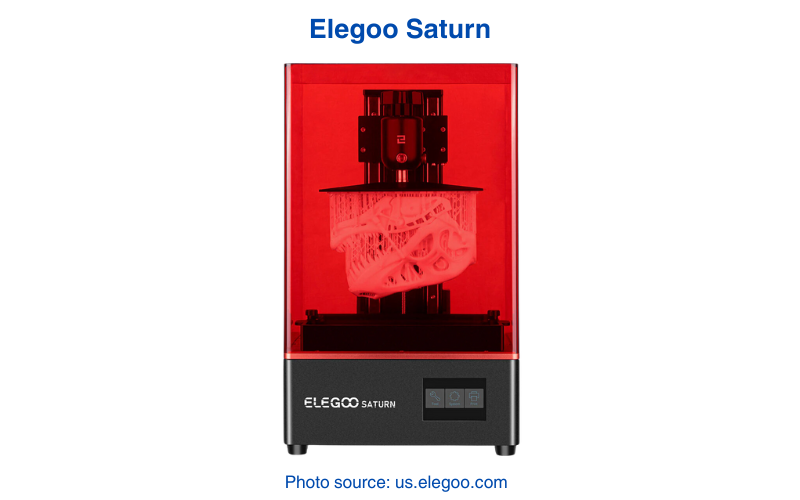
The Creality Halot-Lite and the Elegoo Saturn both cater to users looking for mid-sized resin 3D printers, but they differ in terms of their features and performance.
- Build Volume: The Halot-Lite and Saturn both has a build volume of 192 x 120 x 200 mm. Both printers are suitable for medium-scale projects, but their build volumes are essentially identical.
- Print Technology: The Elegoo Saturn uses MSLA technology paired with a monochrome LCD screen for faster printing and longer durability. Similarly, the Halot-Lite incorporates an 8.9-inch monochrome LCD screen and Creality’s integral light source, for a consistent light distribution and reliable curing.
- Connectivity: The Halot-Lite includes Wi-Fi connectivity alongside USB file transfer, allowing for wireless monitoring and control through the Creality App. In contrast, the Saturn uses USB connectivity, which might be limiting for some users.
- Software: While both printers are compatible with third-party slicers, the Halot-Lite comes with Creality’s Halot Box software, which has seen significant improvements in usability. The Saturn works well with slicers like Lychee and ChiTuBox, which are already established in the resin printing community.
Creality Halot-Lite vs Anycubic Photon Mono X
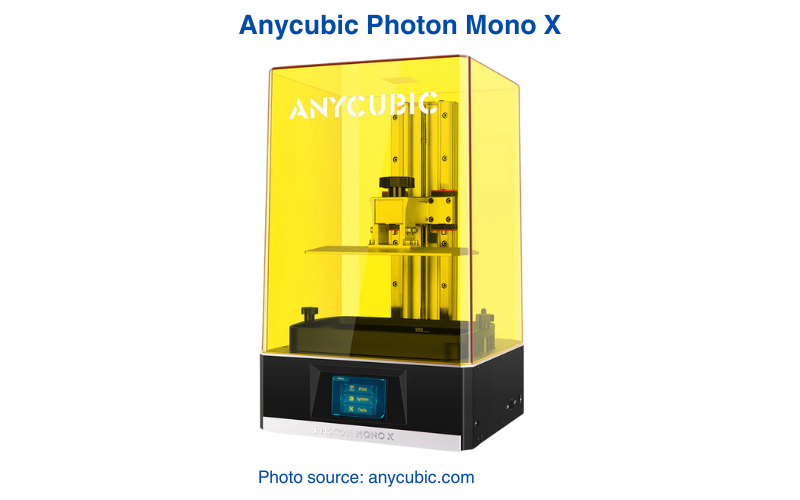
The Creality Halot-Lite and the Anycubic Photon Mono X are mid-size resin printers with overlapping use cases. But they bot have their own strengths.
- Build Volume: The Photon Mono X edges ahead with a build volume of 192 x 120 x 245 mm. This gives slightly more height than the Halot-Lite’s 192 x 120 x 200 mm.
- Print Technology: Both printers use monochrome LCD screens for fast curing times. However, Creality’s integral light source claims better uniformity across the build plate, which could translate to more consistent results.
- Connectivity: The Photon Mono X includes Wi-Fi capabilities similar to the Halot-Lite, allowing for remote file transfer and monitoring. However, the Mono X lacks an integrated app like Creality’s for comprehensive remote control.
- Software: Anycubic’s Photon Workshop is an included slicer, but it lacks some of the advanced features of third-party options. The Halot-Lite’s Halot Box slicer has improved over time, and it also supports third-party slicers for more flexibility.
Real World Applications
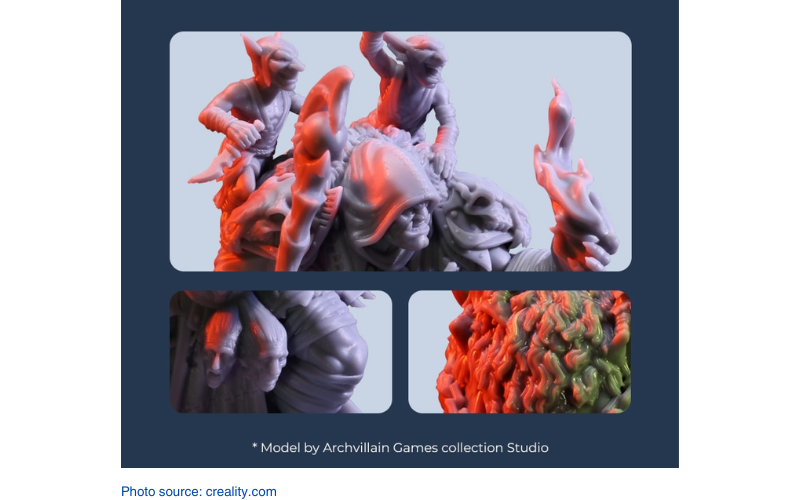
The Creality Halot-Lite proves its usefulness across various fields by handling detailed resin prints with ease. Let’s explore some practical examples:
- Product Design and Prototyping: Designers use the Halot-Lite to create prototypes for products like small gadgets and tools. Its combination of fine resolution and steady performance allows teams to produce detailed models that help refine designs before manufacturing. This capability speeds up iterations and makes the design process more efficient.
- Entertainment and Miniatures: In the entertainment industry, creators turn to the Halot-Lite for detailed figurines and miniatures. Its mid-sized build volume and high-quality prints are perfect for crafting tabletop game pieces, intricate models, or props that require sharp details without needing extensive post-processing.
- Education and Training: Schools and universities integrate the Halot-Lite into STEM programs, helping students learn 3D printing techniques while creating visual aids, prototypes, or even small mechanical parts. Its ease of use makes it a great teaching tool for introducing advanced concepts in a practical way.
- Custom Manufacturing and Small Businesses: Small businesses rely on the Halot-Lite for producing custom orders like personalized figurines or promotional items. It supports a variety of resin types, giving businesses flexibility to meet different demands while keeping production local and cost-effective.
- Art and Creative Work: Artists embrace the Halot-Lite to bring intricate designs to life. It’s particularly well-suited for crafting jewelry, sculptures, or other artistic pieces where capturing fine details is key. The activated carbon filter adds an extra level of comfort for those working indoors for extended periods.
Conclusion
The Creality Halot-Lite is a capable resin 3D printer that balances performance and usability for creators working on mid-sized projects. With its 192 x 120 x 200 mm build volume and 50-micron resolution, it delivers the level of detail needed for a variety of tasks, from miniatures to prototypes. Its integral light source, designed with 12 lamp beads, ensures consistent curing across the build area, helping users achieve accurate results.
The inclusion of Wi-Fi connectivity simplifies workflow by allowing remote monitoring and control through the Creality App. The printer also supports popular slicing software like Halot Box and Lychee, offering flexibility for users with different levels of expertise. The activated carbon filter helps manage resin fumes, adding comfort for those working indoors.
The Halot-Lite’s combination of reliable performance, practical features, and ease of use makes it a strong choice for anyone exploring resin printing, whether for personal projects, small business needs, or educational use. It’s a printer that delivers what you need without unnecessary complications.

